Special thanks to Abbé R. Keller and Abbé Mark H. for their assistance with this project.
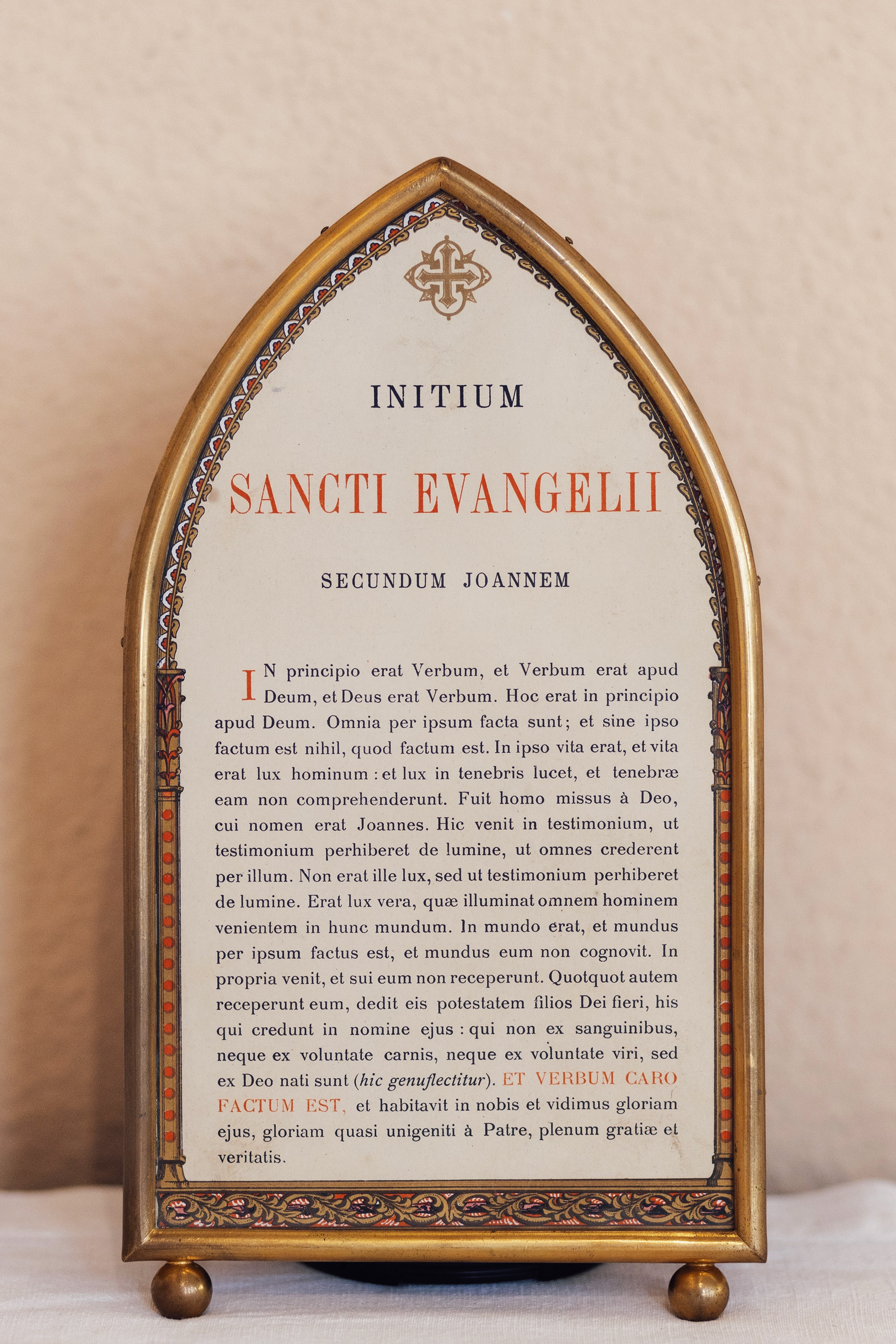
Gospel-side altar card
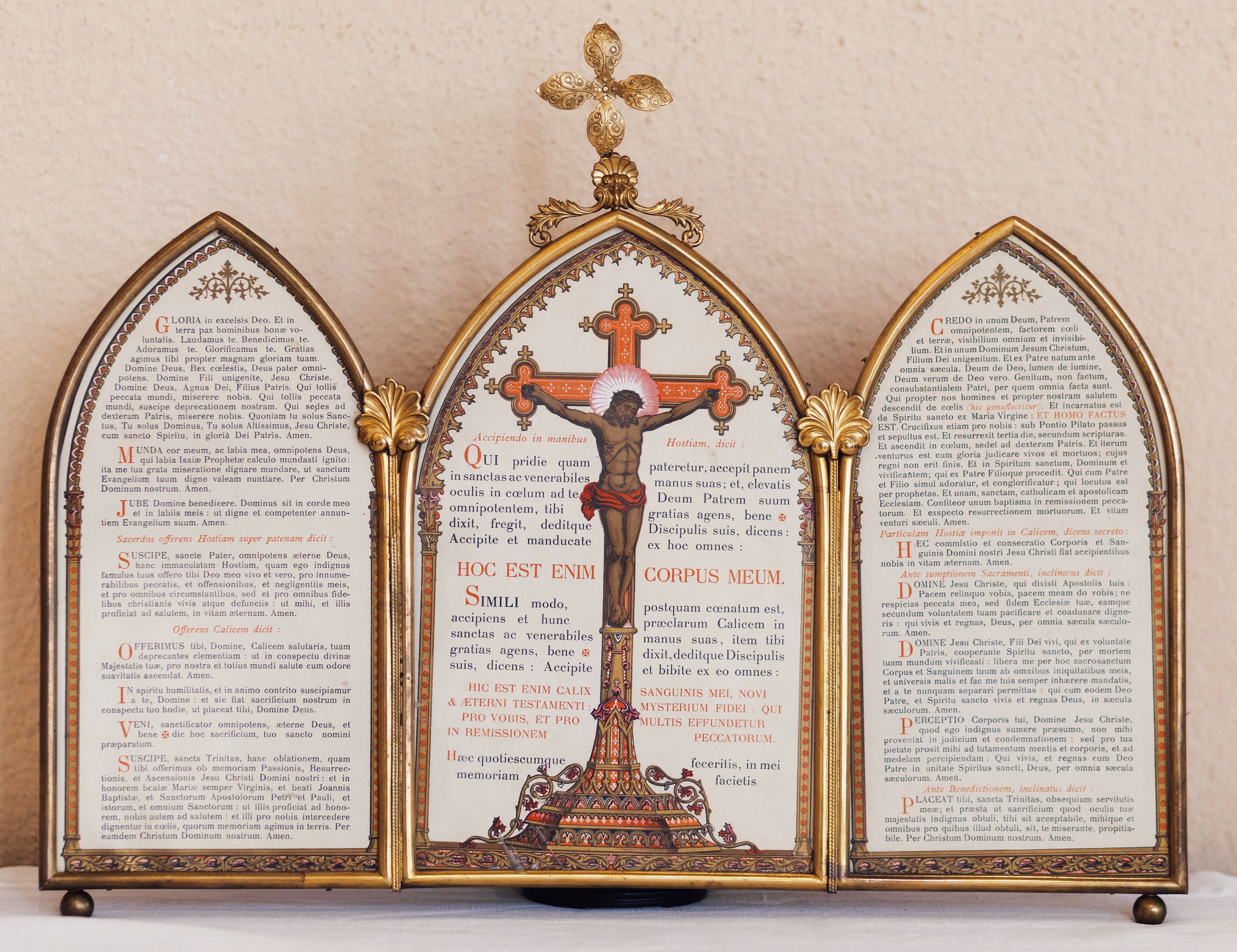
Center altar card

Epistle-side altar card
ALTAR CARDS
Three framed plaques that are placed on the Epistle side, Gospel side, and center of the altar. The card on the Epistle side has the text for the preparation of the chalice and the Psalm recited at the Lavabo. The Gospel side card has the Last Gospel (John 1:1-14), and the center card has the Gloria, Credo, the prayers at the Offertory, and the words of Consecration.
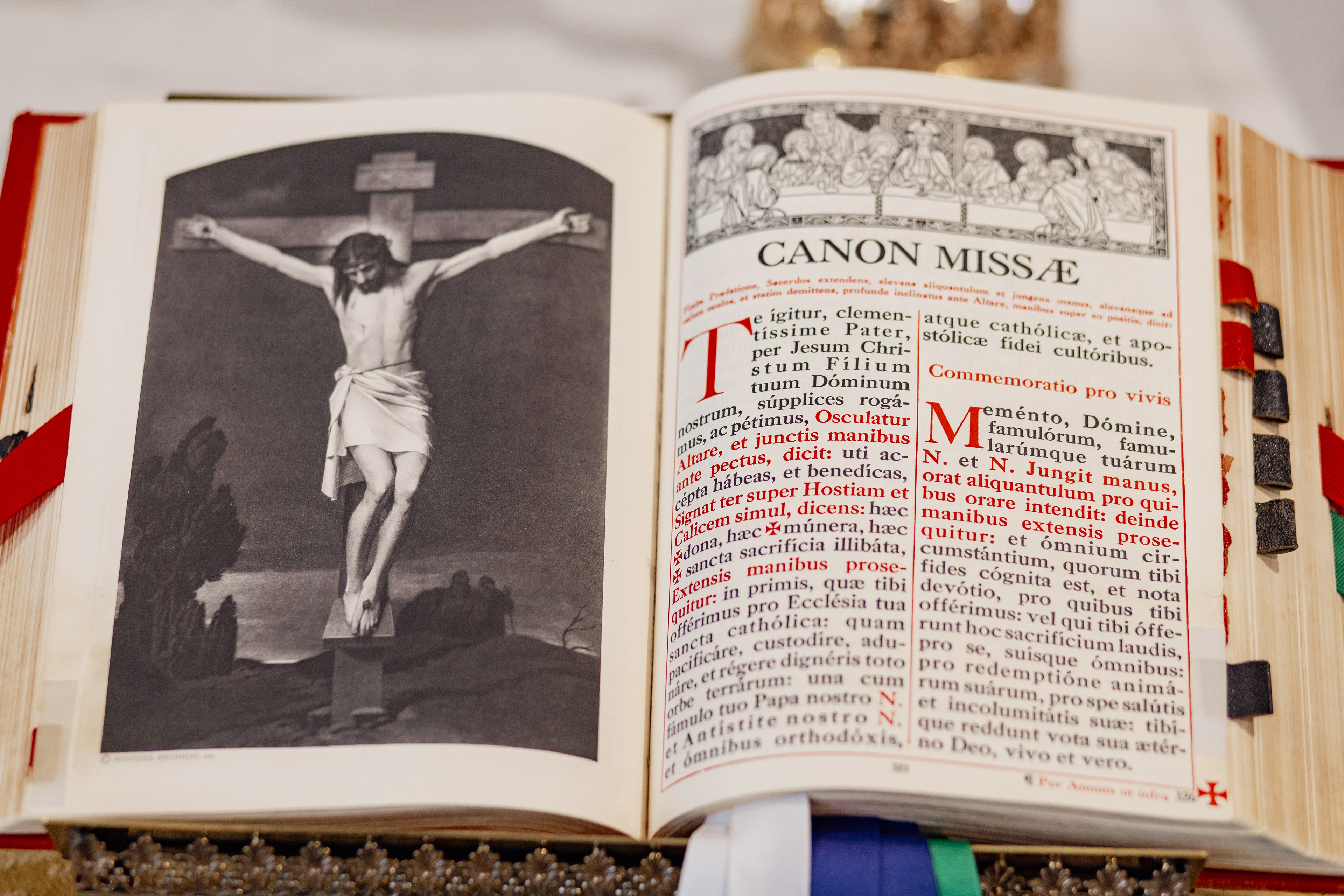
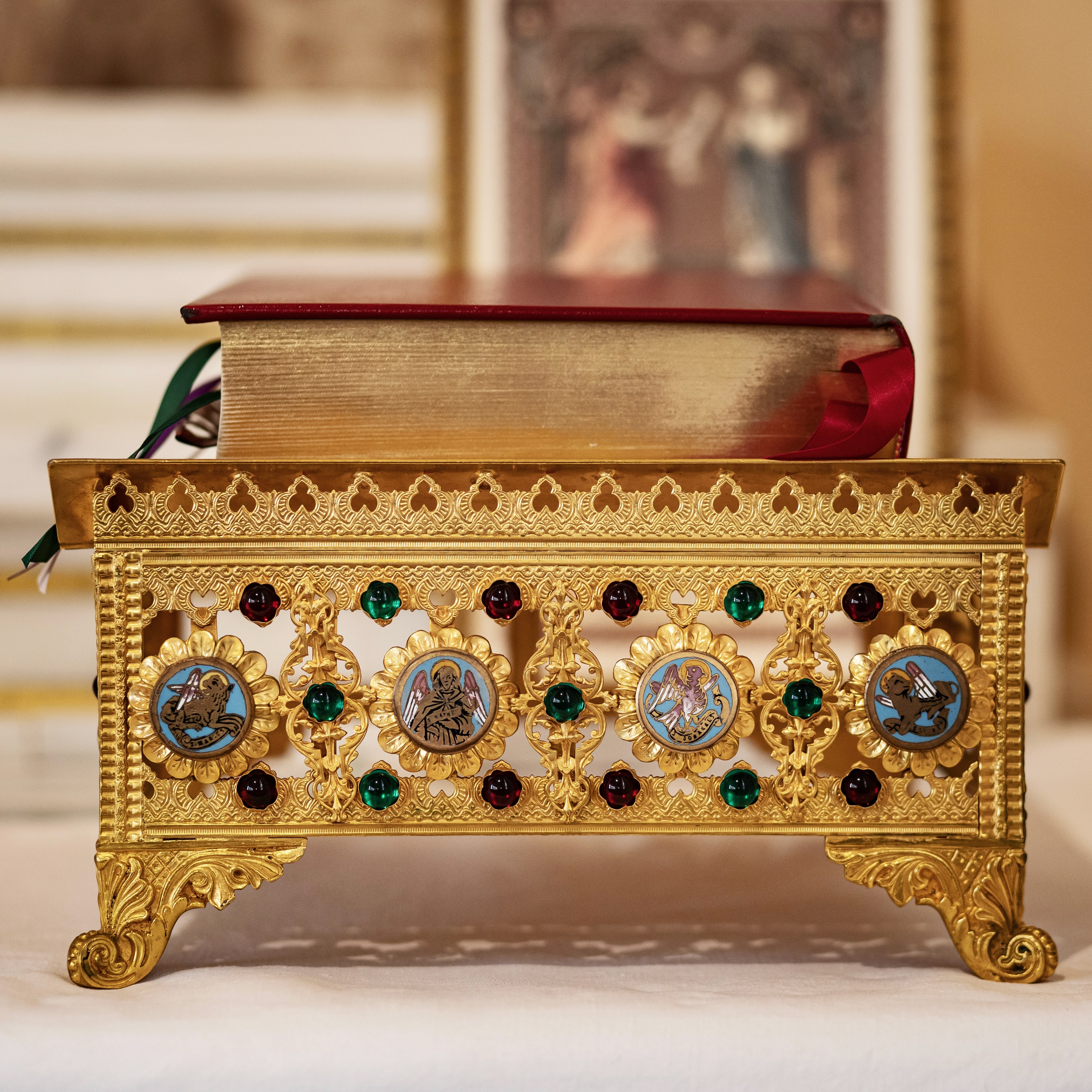
ALTAR MISSAL
The book which contains the prayers and rubrics of the Mass. It contains the Ordinary and Canon of the Mass and the Propers for each day. The missal has leather tabs on the pages of the Canon to facilitate page turns when the priest is maintaining the canonical digits.
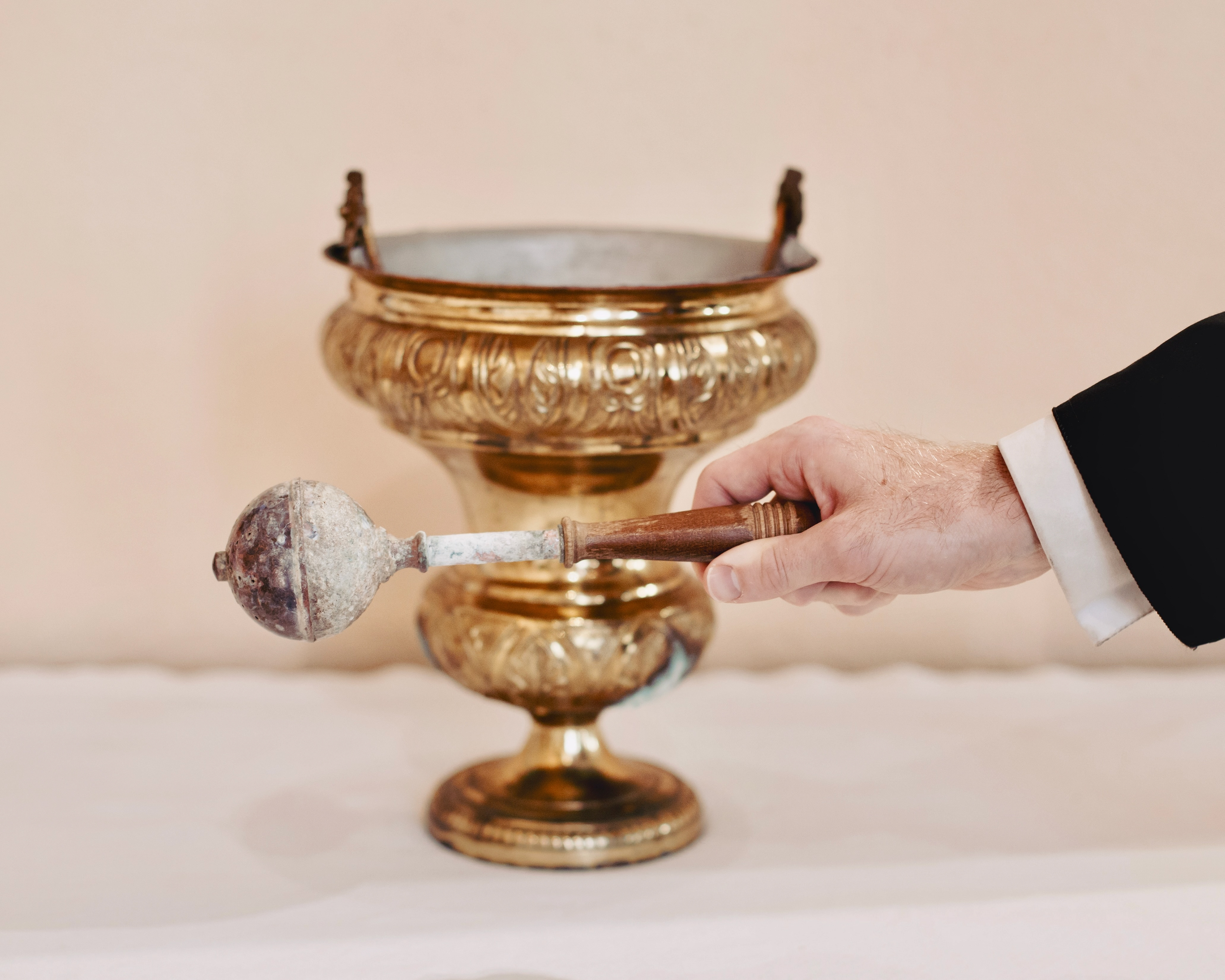
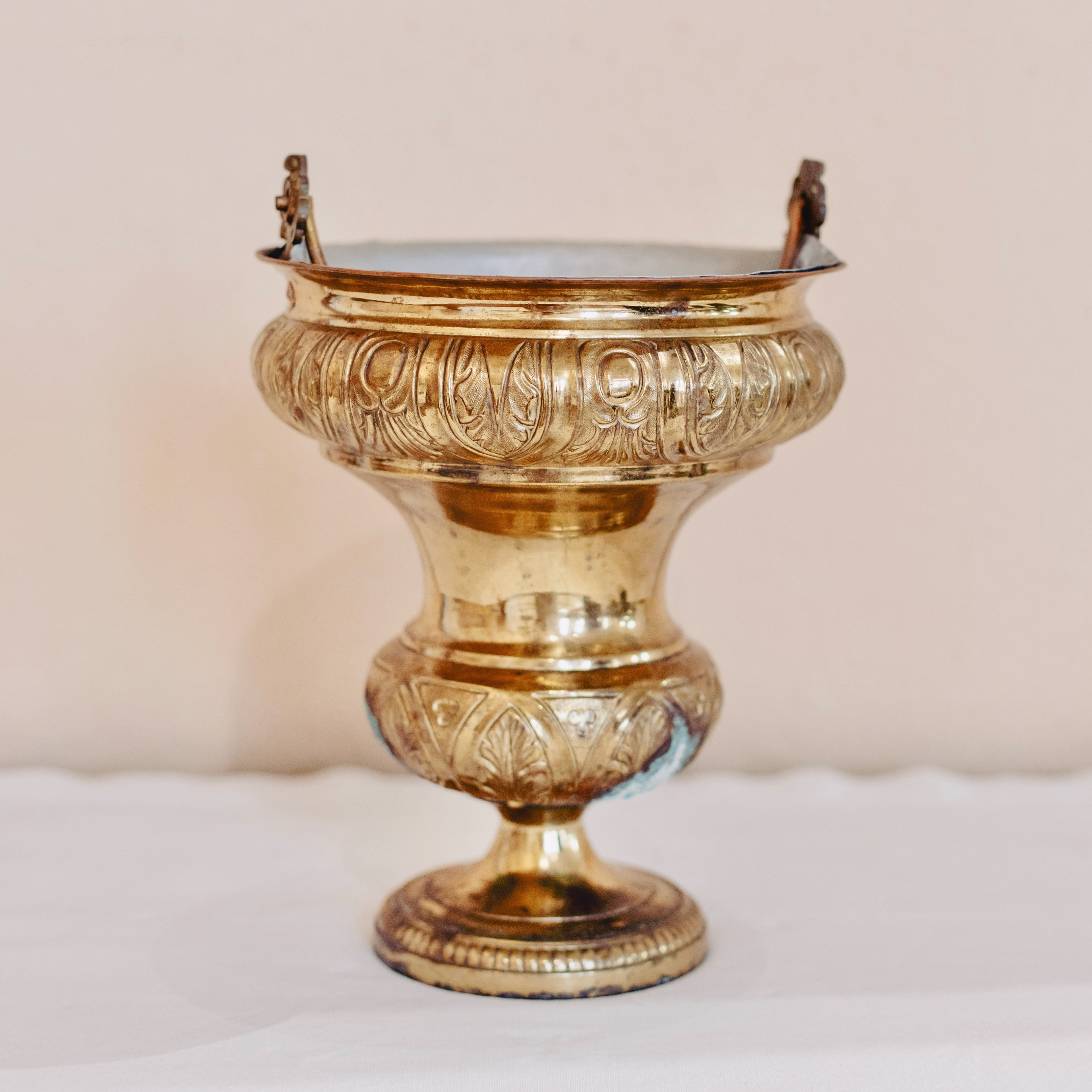
ASPERGILLUM & ASPERSORIUM
The aspergillum, taken from the Latin aspergere (to sprinkle), is used to sprinkle holy water. It is used during the Asperges or Vidi Aquam at the start of Sunday High Mass and often during blessings of people and sacramentals. The aspersorium, taken from the same Latin root word, is the container that holds the holy water.

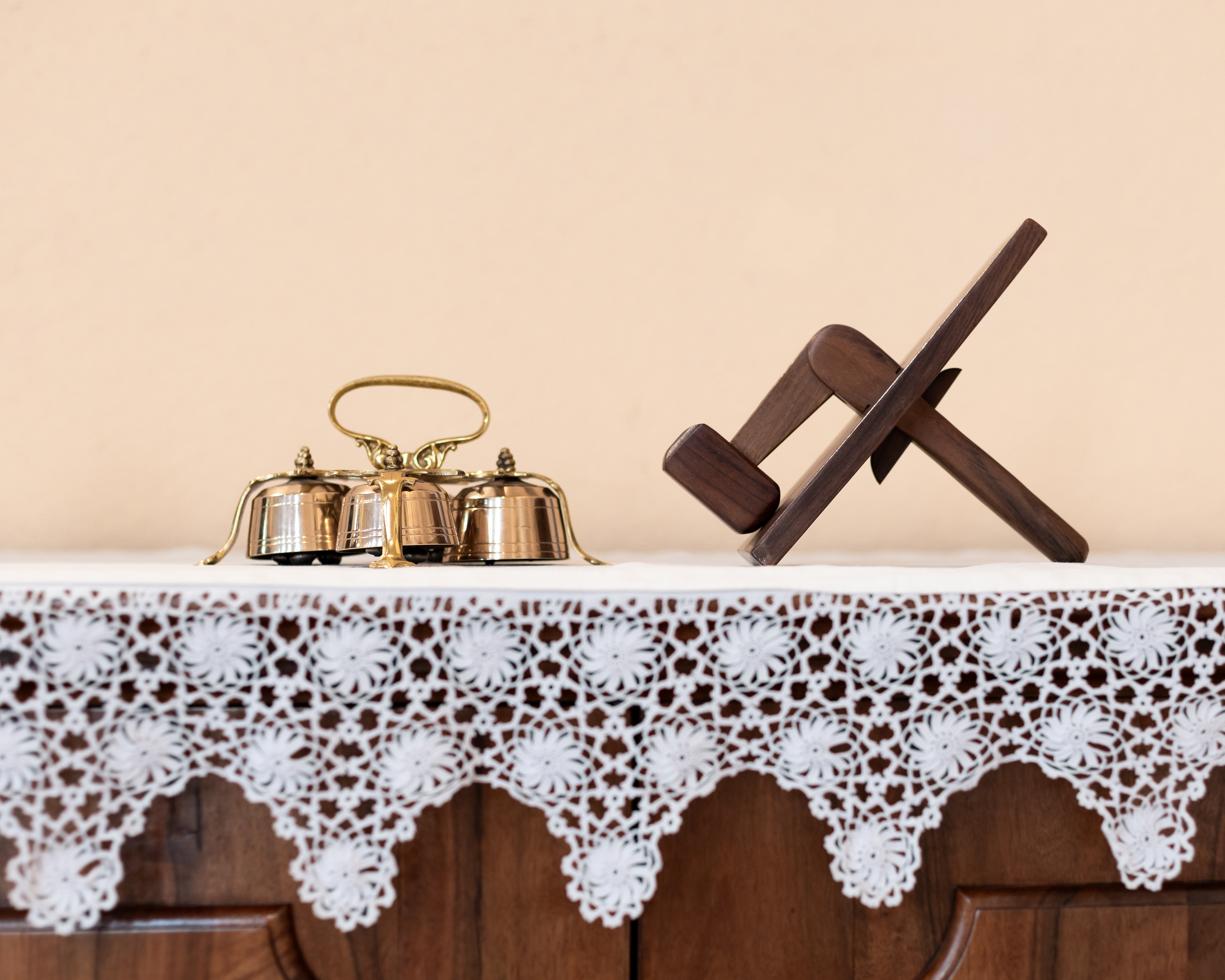
BELLS & CROTALUS
The sanctuary bell is rung at the beginning of each Mass as the priest processes in and at the start of other ceremonies when done separately from the Mass, such as Exposition of the Blessed Sacrament. In places where the Divine Office is prayed publicly, the bell may be rung as those seated in choir enter the sanctuary.
The Sanctus bells are rung at the Sanctus, during the Canon at the Hanc Igitur and the consecration, and at the priest’s Communion. They are used during Benediction of the Blessed Sacrament and Eucharistic Processions. They are also rung during the Gloria on two days of the Liturgical Year: Holy Thursday and Holy Saturday at the Easter Vigil.
The crotalus (rattle) is a wooden clapper that is used on only two days of the year: Holy Thursday after the Gloria and Good Friday. It replaces the bells at the usual places during the Mass on Holy Thursday and is heard during the procession with the Blessed Sacrament on both days.



CHALICE
Taken from the Latin calix (cup), the chalice is lined with gold as it holds the Precious Blood during the Sacrifice of the Mass. Each chalice is marked with a cross on the base to show where the priest is to drink so as to not smear the Precious Blood across the rim. These crosses may be simple or very ornate. The chalice is arranged with several other altar furnishings, veiled, and placed on the altar during the Mass.
Right: chalice, purificator, paten and priest's host (unconsecrated), pall, chalice veil, and burse.

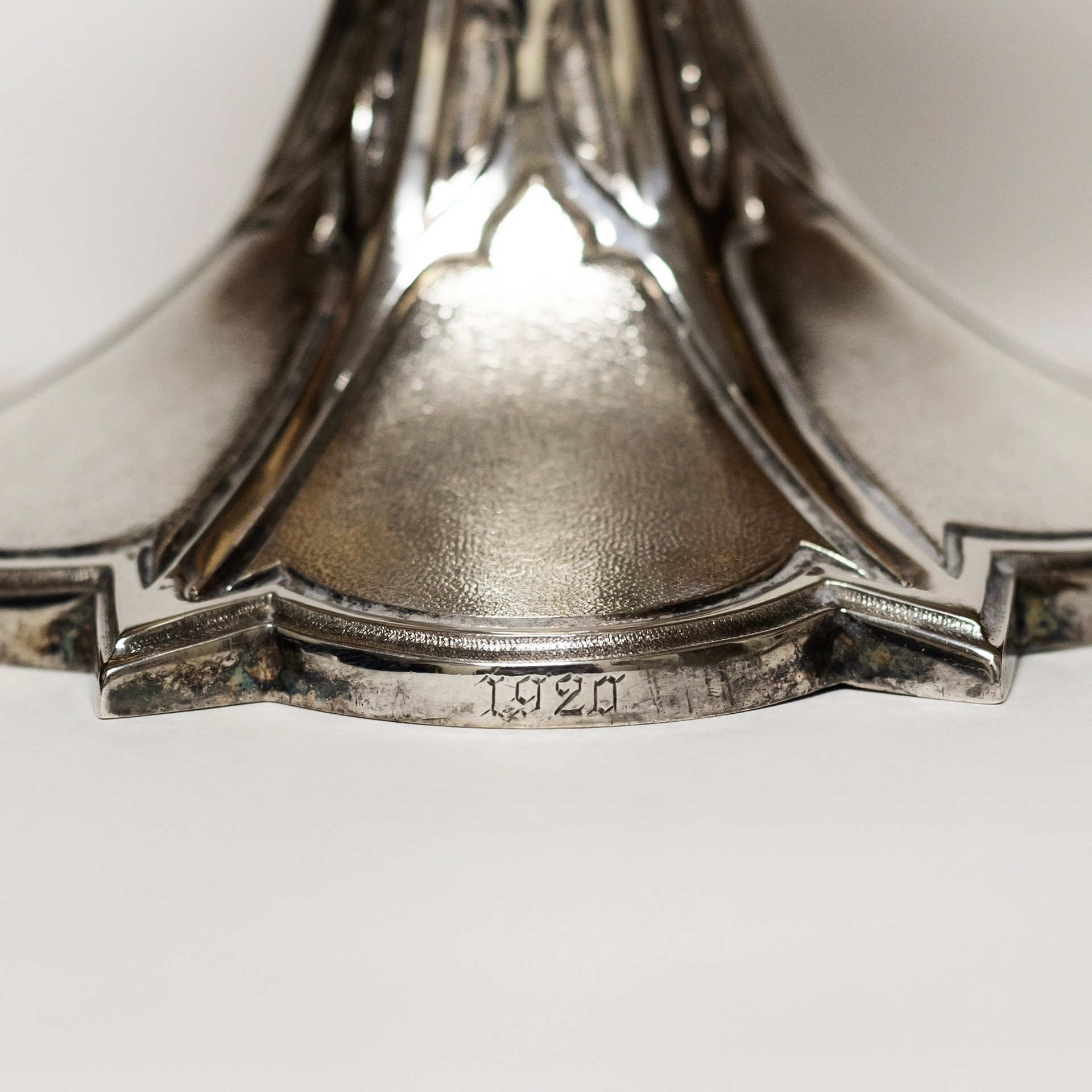
Most chalices and ciboria have dates etched into the base denoting the year the vessel was consecrated.
CIBORIUM
From the Latin cibus (food), the ciborium (pl. ciboria) holds the consecrated Hosts distributed to the faithful or reserved in the tabernacle. It is similar in design to the chalice but has a lid to protect its Contents.
Chalices, ciboria, and patens must be at least lined with - but should be made entirely of - gold or silver. In exceptional circumstances, they may be made of pewter but should still be lined with gold. As with so many liturgical things, there is both a symbolic reason and a practical one.
Symbolically: As the most prized of the metals, gold represents things of a higher, or divine, order. It also serves as a reminder of the Magi's gift of gold, representing the Kingship of Christ.
Practically: Lower-grade materials can chip (porcelain), splinter (wood), or tarnish or rust (brass or copper) and contaminate the contents of the vessel.


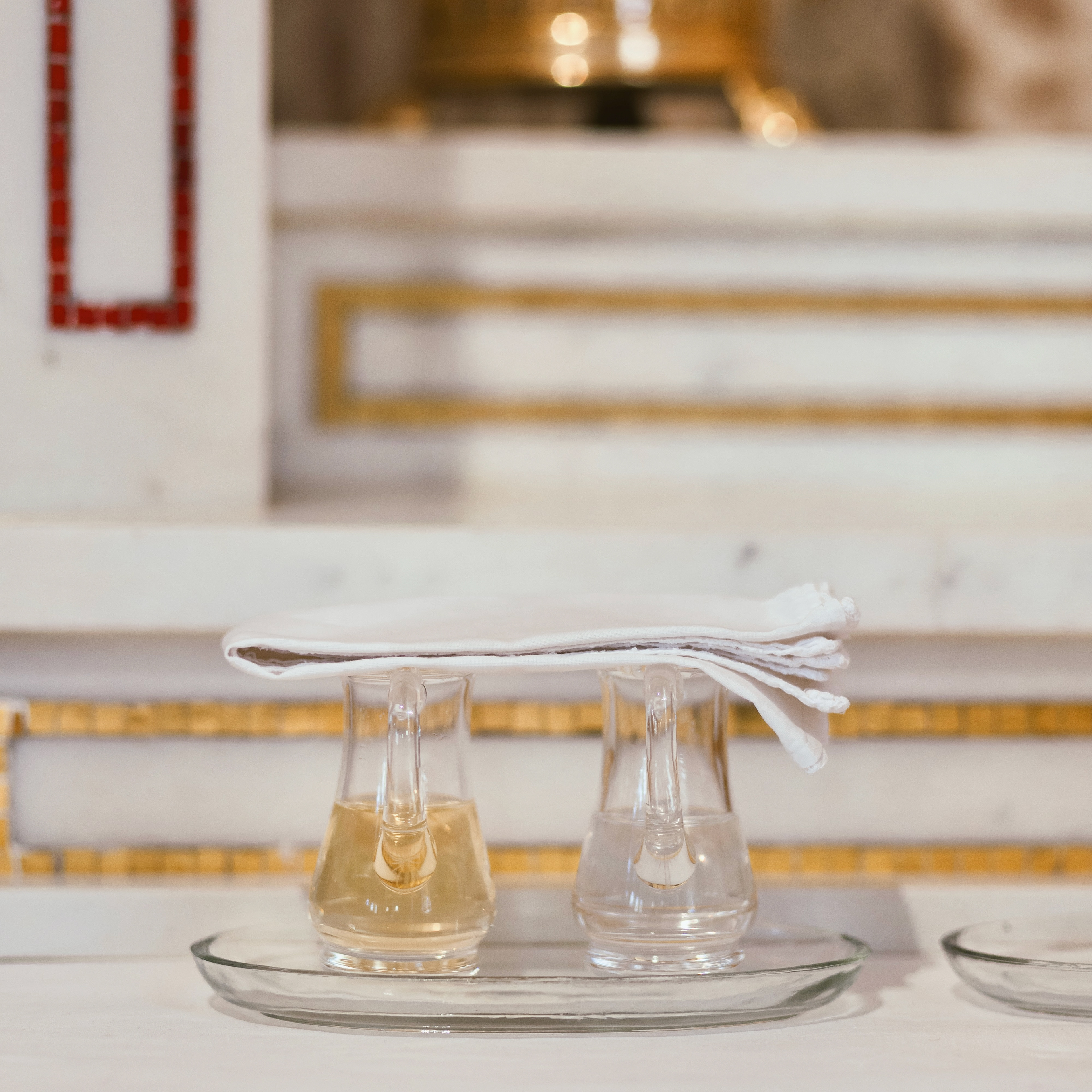
CRUETS
Small glass or metal containers that hold the water and wine for the offering. They are also used at the Lavabo and during the ablutions.

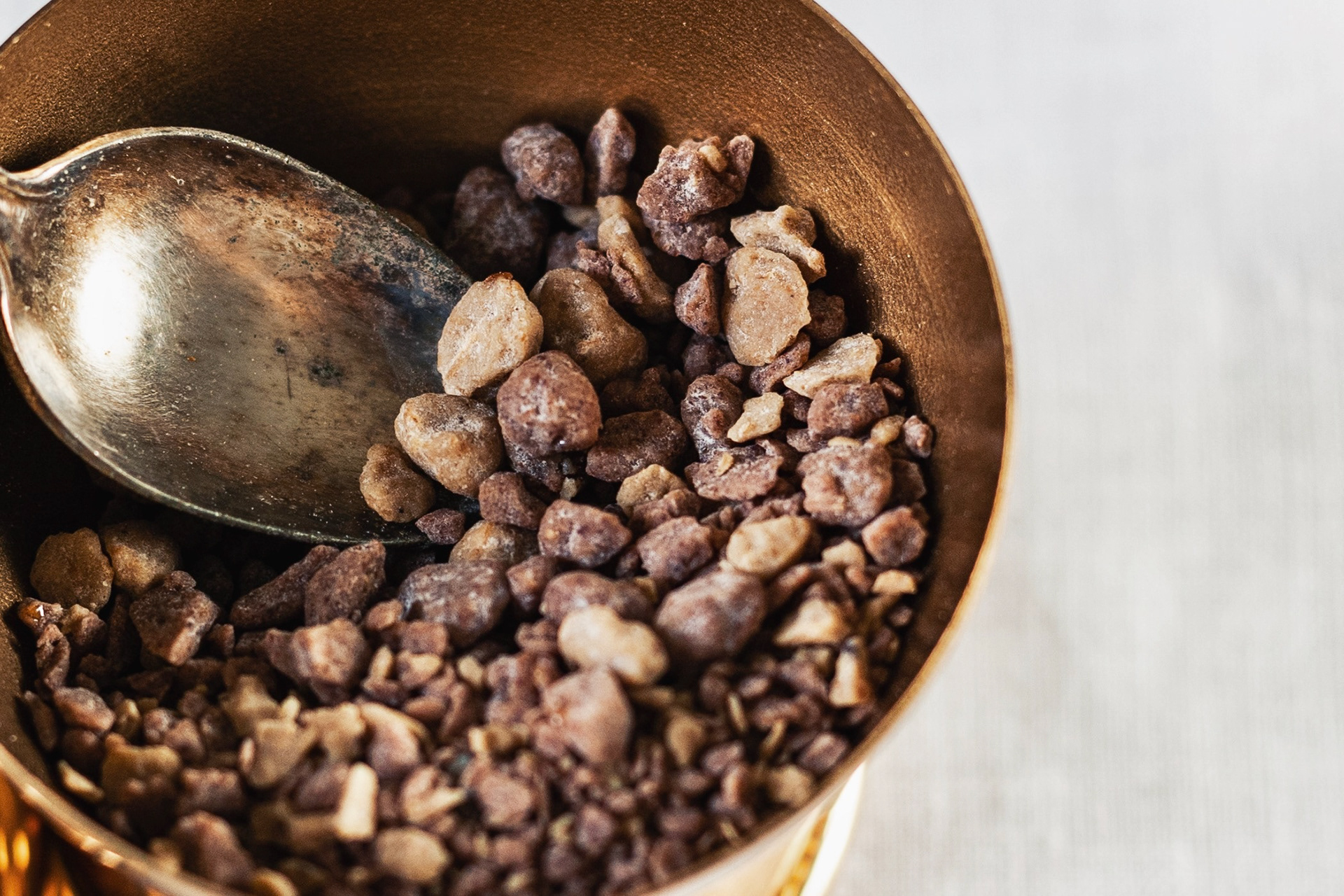
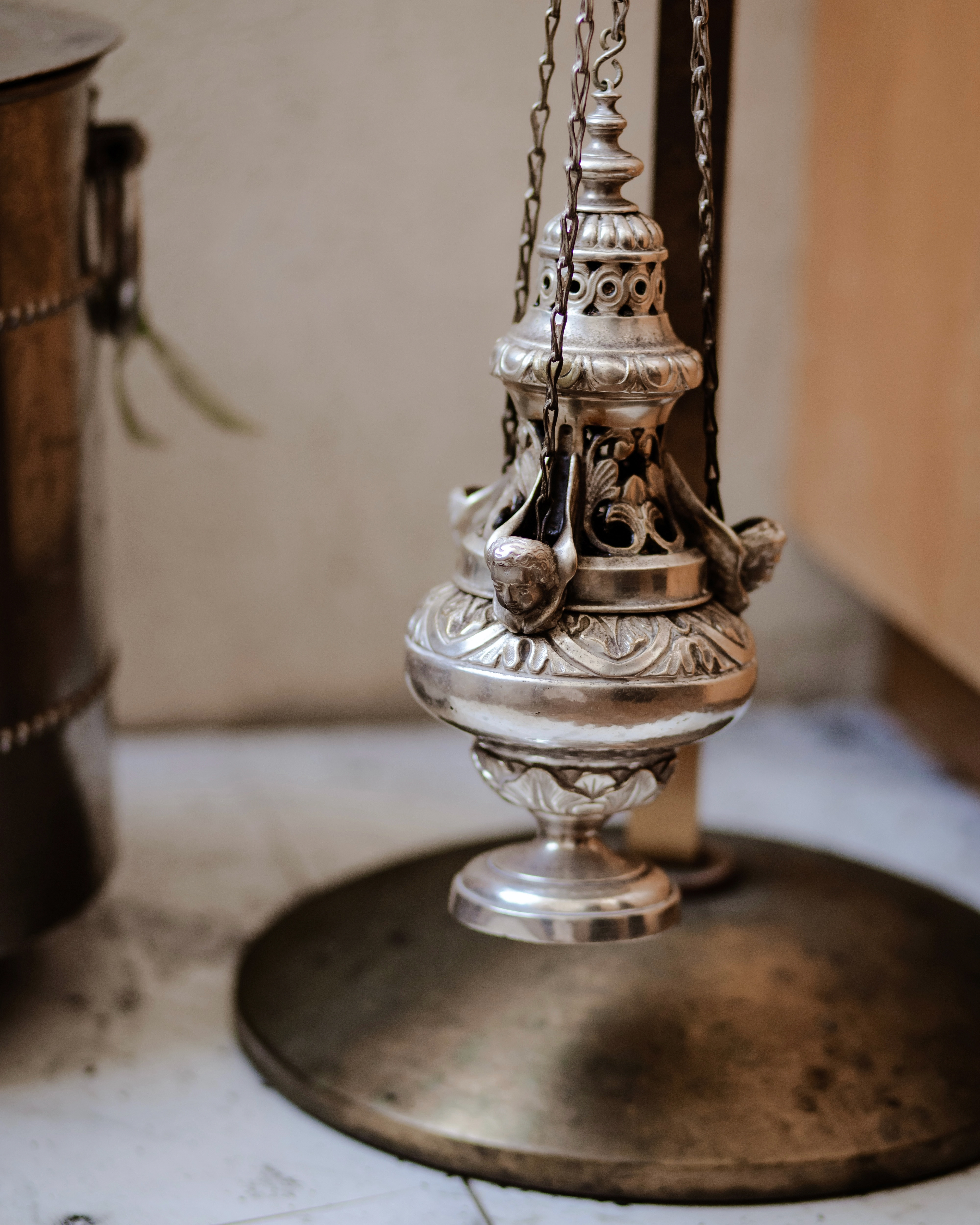
INCENSE & THURIBLE
The thurible, also called a censer, is a metal vessel held by chains in which incense is burned. Incense is used during High Masses, Solemn Vespers, Benediction, processions, and other solemn ceremonies and blessings.
The incense boat is a small vessel which holds the grains of incense. A small spoon is used to place the incense in the thurible.

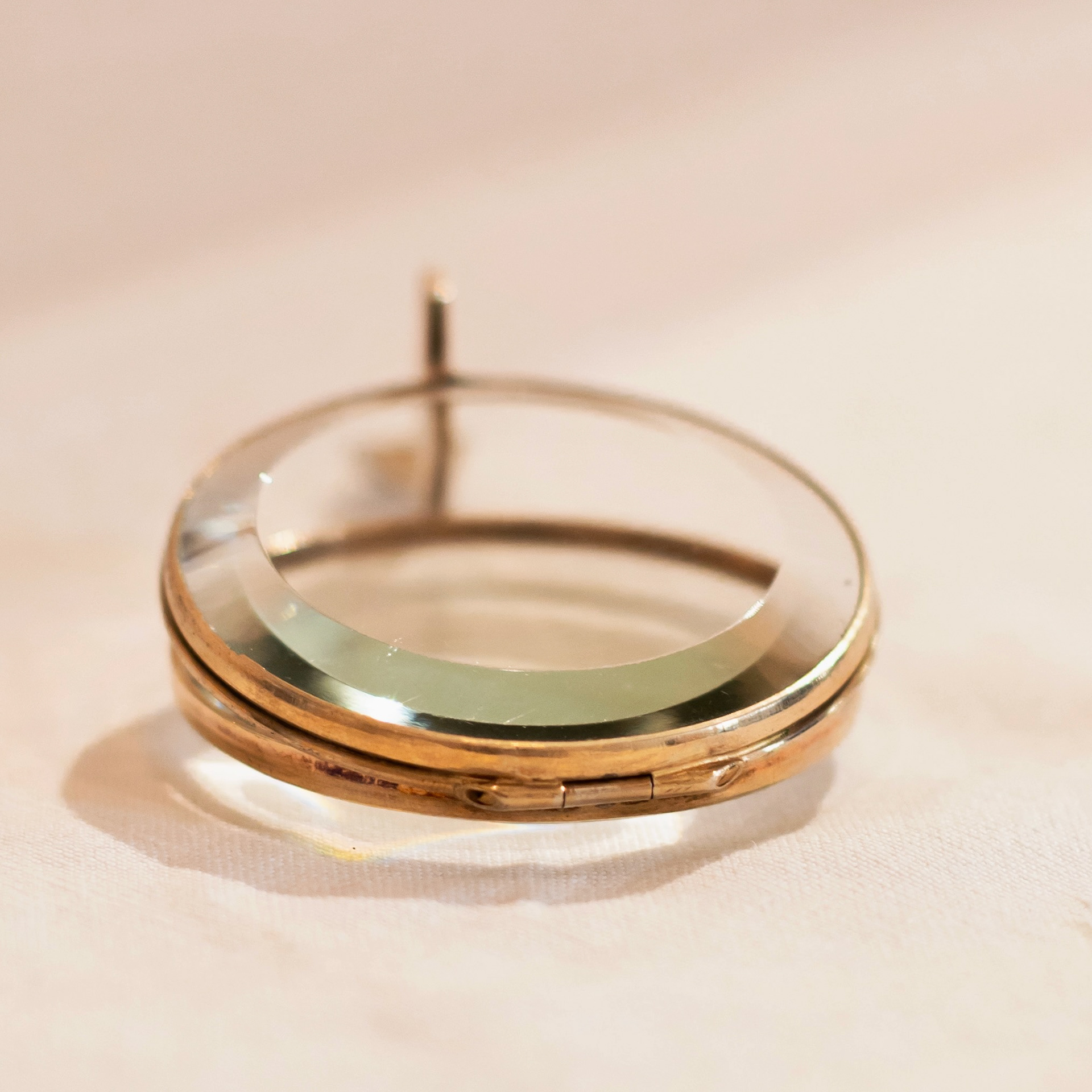
MONSTRANCE & LUNA
From the Latin monstrare (to show), the monstrance is a vessel that is made of precious metal and decorated, used to display the Host during Exposition of the Blessed Sacrament. It is also carried during Eucharistic processions. Whenever the priest carries the monstrance with the Host in it, he wears and covers his hands with the humeral veil.
The luna (moon) is a crescent-shaped or circular container that holds the Host upright while It is displayed in the monstrance.

Paten and unconsecrated priest's host

Agnus Dei, Panis Vivus - Lamb of God, Living Bread
PATEN
From the Latin patena (dish), the paten is a small plate made of precious metal, usually with a small rim underneath to fit it to the chalice so it does not slide. The host is laid on the paten until the Offertory, when the paten is slid - veiled - under the corporal until after the Our Father. During Solemn High Mass, the paten is held - veiled - by the subdeacon wearing the humeral veil.
Patens are often decorated on the underside with a crown of thorns, IHS, or other symbols or text.
The chalice and paten (not the ciborium) are the most honored of the sacred vessels and are necessary for the Mass to be offered. The Body of Our Lord is placed on the paten and the Precious Blood is consecrated in the chalice.
The ciborium is of great value but is not required for the priest to say Mass as the distribution of Communion to the faithful is not necessary for the Mass to be said. For example, during a priest's private Mass, the priest alone receives Communion as there are no servers or laity assisting, and in the pre-1955 Liturgy for Good Friday, the faithful do not receive. The ciborium is not used in either of these situations.
TORCHES
From the Sanctus until the end of Communion at the High Mass, torches are carried by several servers, representing and reverencing Our Lord's Presence on the altar. At a Low Mass, they are replaced by a small candle placed on the altar, which is extinguished during the ablutions.